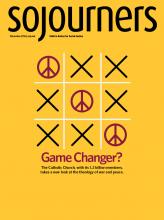WHEN I ROAMED the Flushing Public Library as an immigrant child, I encountered mirrors and windows—in Little Women, Jo loved her sisters as I did mine; in A Little Princess, Sara Crewe’s heart for the disenfranchised stirred me to compassion; and in Anne of Green Gables, I found another child who loved to write.
It didn’t strike me until later that I never encountered a hero who reflected my ethnicity or brown skin. If Indian culture showed up at all, it was portrayed negatively, as in The Secret Garden, where Indians were described as “natives” and “pigs.” In another book, a lone Indian character was a mysterious servant without any back story. I still reread those two books regularly and know they were crucial in my formation. But I wonder if their portrayal of my ethnicity underlined the truth that my Indian-ness was a liability in wider culture. It took years for me to be grateful, instead of ashamed, about being Bengali. A good book or two with a Bengali protagonist might have helped.
Stories are powerful, and Jesus modeled storytelling that changes the hearer for good. But other stories can be propaganda that causes us to hate or fear the “other.” Jesus raged at those who harm children by causing them to sin: “It would be better for you to have a large millstone tied around your neck.”
When it comes to race and power in books for children, questions abound. Must I have experienced the same lack of privilege as my main character to tell her story? When is storytelling a form of cultural exchange and when does it disintegrate into cultural appropriation? Does the fear of making a “fatal flaw” hinder creativity? Who decides that a story should be kept from children because it might teach them to hate the “other” or even themselves? Does this kind of protection violate freedom of expression?
Read the Full Article

